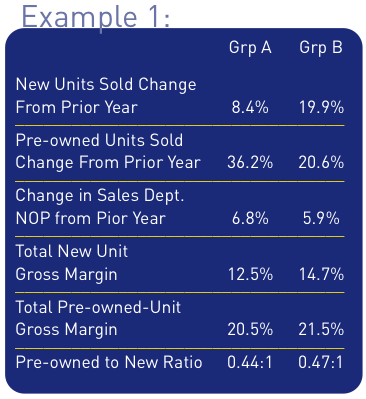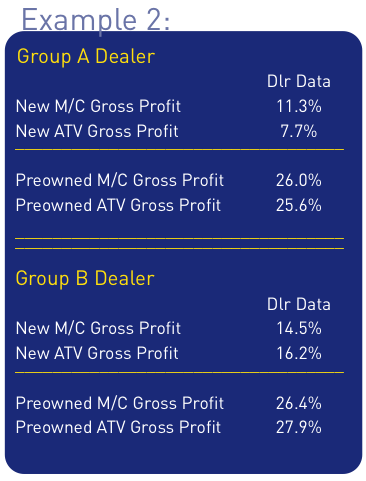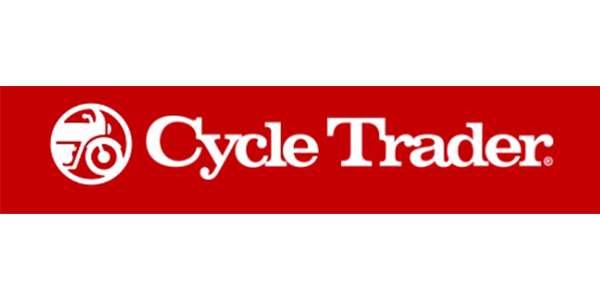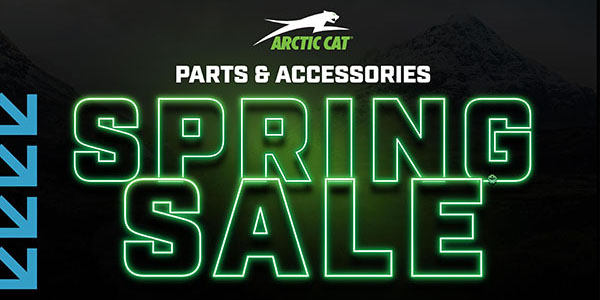If you follow this column, you’ve read my ranting about making a commitment to get involved in the pre-owned business. Hopefully, you’ve seen the actual dealer data and recognized the significance of the difference in gross profit margin (and net profits) as compared with new unit sales.
This column will address some of the key points of establishing this important part of your business, as well as tips on making it grow profits. This article includes excerpts from the GSA Pre-Owned Profit Center Guide. This complete guide is currently only available to our 20-group members.
Start Your Pre-Owned Profit Center
Buy Low & Sell High: This seems obvious enough, but it is the single most important piece to this puzzle. The inability to adhere to this rule is the major reason dealers fail and give up on this business. If you can’t buy it right, don’t buy it. Period.
To buy low and sell high, you have to know what you are buying, what it’s worth, what you want to make as a margin and what it will take to recondition the unit and sell it.
The formula for making money in this business is:
Market Value minus your desired margin and reconditioning costs = trade or purchase value.
Many of you have depended on the various trade-in guides (NADA, KBB, etc.) to determine market value. These books are only a guide based on an average of national norms — they can’t always reflect the real value in your area. If you really want to succeed, you need to know what the actual value is in your market today. Understanding this value takes work. It may be wise to seek a key person who has the skills to do this job well. You need a realistic number for what this unit is worth for the formula to work properly.
Pre-owned versus used: There is a significant difference in the customers’ perception of the value of “pre-owned” versus “used.” It is important to recognize this. When you are buying, it is “used.” When you are selling, it is “pre-owned.” Your entire dealership team needs to understand this and apply the correct terminology. It has to become a part of your dealership culture.
The Five Elements of Profitability
1. Acquisition
Trade-Ins: You have to have them to sell them. While trade-ins are a major part of the acquisition process, depending solely on trades will never provide enough product to achieve the volume necessary to really excel in this business.
To improve trade-in ratios, you must market this part of your dealership. Don’t expect the public to assume you take trades.
Watch for high mileage or high-ticket repair units in your service department. These can become trade-in opportunities.
Repos: Contact local banks, finance companies and credit unions, and let them know you would be interested in buying their repossessed units.
Auctions: Many dealers do an excellent job of acquiring units from national, regional and OE auctions, but it is getting harder every day due to the amount of competition. Still, this should be included in your overall acquisition strategy. For non-OE auctions, even if you are planning to purchase through the web, you should attend a live auction to fully understand and take advantage of the process. Most of the companies will be happy to walk you through the details of their program.
Purchases: If you have the capital, get aggressive about buying units from customers — as long as you can buy them right. Again, market this with lines like “We buy bikes” or “We pay cash for good used bikes and ATVs” in your ads, on your website and with in-store signage. Fall is an excellent time to acquire these units for the next season.
Don’t just focus on customers. Some powersports dealers won’t retail brands they don’t carry. Let the dealerships in your area know you’re interested in any trades they don’t want to sell. Car dealers, boat dealers and RV dealers sometimes take motorcycles or ATVs on trade and can be excellent sources for additional units.
2. Appraisal
The main rule here is always use an appraisal form. This tool provides protection for you and your customer and has sales benefits for your dealership.
• It documents the condition of the unit and ensures that all parts of the unit are inspected.
• It is a credible tool that helps justify the trade-in price to your customer.
• It provides for an expiration date for the appraisal.
• It reinforces your professional image to your customers.
Appraisal tips:
1. Designate a limited number of trained sales personnel to conduct appraisals. They must have an excellent grasp of local market values. This is often the sales manager’s job.
2. Involve the service department if there are questionable mechanical situations. Service must charge the sales department for their time at the going shop rate.
3. Include an estimate of the reconditioning costs.
4. Take digital pictures of every unit you appraise to ensure that they are in the same condition when they return.
5. Set an expiration date for the appraisal — 72 hours max. This creates a sense of urgency for the customer and reduces the opportunity for them to remove accessories.
6. The form must be dated and signed by the customer.
Accessories: Once you have established the unit’s value, you can determine the value of installed accessories. A rough guideline is: 25 percent to 50 percent of new value if they are desirable accessories that add to the value of the unit or can be resold at a profit. Allot zero credit if they are not desirable in your market.
Over-allowances: An over-allowance occurs when you give the seller more than wholesale value for their pre-owned unit. You might consider doing this if it is a desirable product that you know you can turn quickly or you have a chance to move aged new inventory.
Your accounting process should treat an over-allowance as a discount off of the new product to maintain a fixed margin for your pre-owned. Applying the over-allowance against the new unit provides a more realistic and consistent picture of the profitability in both the new and pre-owned profit centers. If you are paying a commission based on gross profit, not accounting for it in this manner would penalize the person who sells this unit. It should affect the person who sold the new unit and took the trade-in.
3. Reconditioning
The general rule is to recondition within 48 hours. Pre-owned product ties up your cash. The sooner you can display and sell it, the better. Surprise recall announcements and economic trends can affect market value very quickly.
You want to acquire units that require as little reconditioning as possible. However, the unit must be reconditioned to the point that you would be willing to ride it yourself. It must be in good condition and safe to ride before it hits your showroom floor.
Consider wholesaling units that require extensive reconditioning unless you have bought low enough to cover the costs, and it is a desirable unit in your area.
If the deal is profitable, you might be willing to spend extra time on reconditioning during the off-season to provide work for your technicians.
4. Merchandising
Accessories:
There may be advantages to removing accessory items.
• This may allow you to market the unit to a larger audience that may not have a use for the accessories.
• It may create an opportunity for add-on sales of new accessories to the next purchaser.
• You may be able to sell the take-offs in your dealership or on the Internet.
Conversely, there may also be opportunities to market the unit to a larger audience by adding accessories.
• Only install accessories that improve salability — if it won’t make the unit sell quicker, don’t install it.
• Avoid installing performance-enhancing accessories. They seldom increase the value relative to their cost.
• If you have aged pre-owned inventory, you may be able to stimulate sales by changing their appearance with accessories.
Display: Consider developing a designated pre-owned area within your showroom. This reduces confusion and attracts new customers who are looking for pre-owned products.
Put the same effort into merchandising pre-owned units that you do for new products. This includes the showroom floor, your website and even at shows and events. Develop separate outside displays to stimulate traffic and promote your pre-owned business.
Use high-quality hangtags to create value. Include details like reconditioning highlights, included warranty coverage, accessories or upgrades. State that the unit qualifies for extended mechanical coverage. Also provide this information on your website.
5. Advertise and Promote
Promote your business as well as the units: Promoting your pre-owned business not only increases sales and floor traffic; it helps justify your prices. High-visibility pre-owned dealers are perceived as being more reasonable in their pricing.
Your website must have an up-to-date pre-owned section with photos and descriptions of your inventory.
Effective promotions: Just as with your new units, pre-owned sales benefit from the utilization of effective promotions.
Contact other businesses that might be interested in sending your promo to their customers in exchange for you sending their promo to your customers. Businesses you might consider for this would include auto, boat and RV dealers. This is can be a very inexpensive form of advertising. Be creative and open new markets for your business.
Develop special sales events designed just for pre-owned products. These types of sales can be very effective, particularly if they become an annual or semi-annual event.
Create special trade-in promotions that are designed to promote trade-ins as well as create awareness for your pre-owned business. Combine these with specific new unit promotions to stimulate additional traffic. One example might be a “Bike Buying Days” promotion. Advertise that you will pay top dollar for pre-owned motorcycles during a specific period of time (generally, two or three days or over a weekend). As with any on-site promotion, live remote radio broadcasts can be an effective traffic driver.
Final advice: Watch how the successful, larger auto dealerships in your area promote this part of their business and learn from them.
2011 Pre-Owned Statistics
First, let’s reinforce the need for growing this profit center in your store by looking at some dealer 20-group 2011 statistics.
 Example 1 shows overall average data comparisons between two different groups. Group “A” had an 8.4 percent increase in new sales and a huge 36 percent increase in pre-owned sales compared with last year. This shows an added focus on this area of their business. Group “B” saw good increases in sales in both areas. Look at the difference in margin between new and pre-owned units. Note the increases in net operating profit (NOP). Both groups are approaching the 0.5:1 pre-owned to new sales ratio (one pre-owned sold for every two new units sold) that we consider as a benchmark. Many motivated pre-owned dealers achieve ratios of 1:1 or better.
Example 1 shows overall average data comparisons between two different groups. Group “A” had an 8.4 percent increase in new sales and a huge 36 percent increase in pre-owned sales compared with last year. This shows an added focus on this area of their business. Group “B” saw good increases in sales in both areas. Look at the difference in margin between new and pre-owned units. Note the increases in net operating profit (NOP). Both groups are approaching the 0.5:1 pre-owned to new sales ratio (one pre-owned sold for every two new units sold) that we consider as a benchmark. Many motivated pre-owned dealers achieve ratios of 1:1 or better.
 In Example 2 we selected a dealer from each group to demonstrate how these numbers break out for motorcycles and ATVs (although we monitor this data in several more categories). This really brings home the difference in profit potential for new and pre-owned, doesn’t it?
In Example 2 we selected a dealer from each group to demonstrate how these numbers break out for motorcycles and ATVs (although we monitor this data in several more categories). This really brings home the difference in profit potential for new and pre-owned, doesn’t it?
Over and above the margin advantages, there are numerous other reasons to get involved in this business. Here are some of them:
1. It is like having another OE supplier, but without order requirements, inventory obligations and training commitments.
2. You have control over your gross profit margins.
3. Every pre-owned unit is unique, so you rarely compete with other dealers.
4. Offering to take trade-ins increases your sales of new units.
5. Pre-owned inventory creates additional price points and model selections. This opens new markets and attracts new customers.
6. Some of these customers will convert into new unit purchasers or trade-up to new units later.
7. Pre-owned unit customers frequently purchase add-on accessories, F&I products, parts and service. just like new unit buyers.
8. Reconditioning these units generates additional parts and service business.
Steve Jones, GSA senior projects manager, outlines dealership best business practices to boost margins, increase profitability and retain employees. His monthly column recaps critical measurements used by the leading 20-group dealers. GSA is recognized as the industry’s #1 authority on dealer profitability. The goal for these articles is to get you thinking about the performance you could be achieving in your dealership. If you have questions, or would like to discuss the help we can provide, please contact me. Access to our new Voyager 5 data reporting and analysis system is available for any dealership for nominal fee. For more information on our data reporting system, dealer 20-groups, on-site consulting or training, drop me an email at [email protected] or visit www.gartsutton.com.













